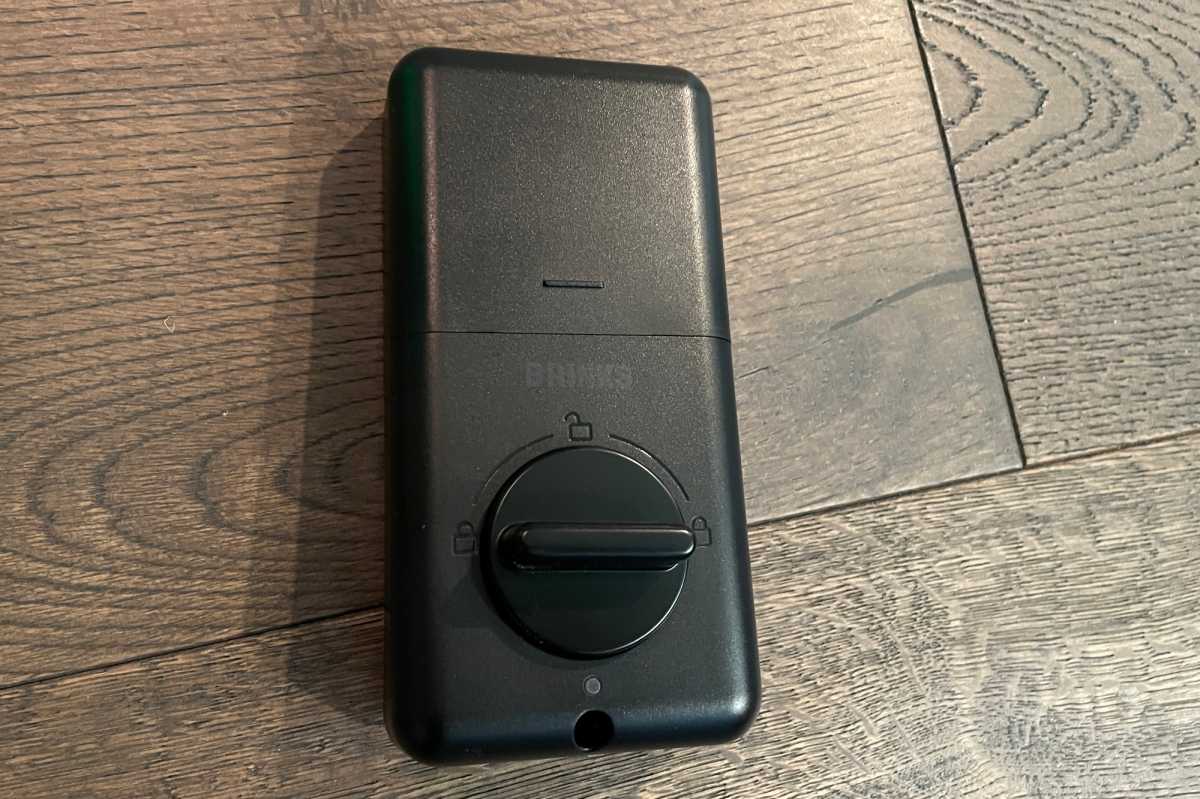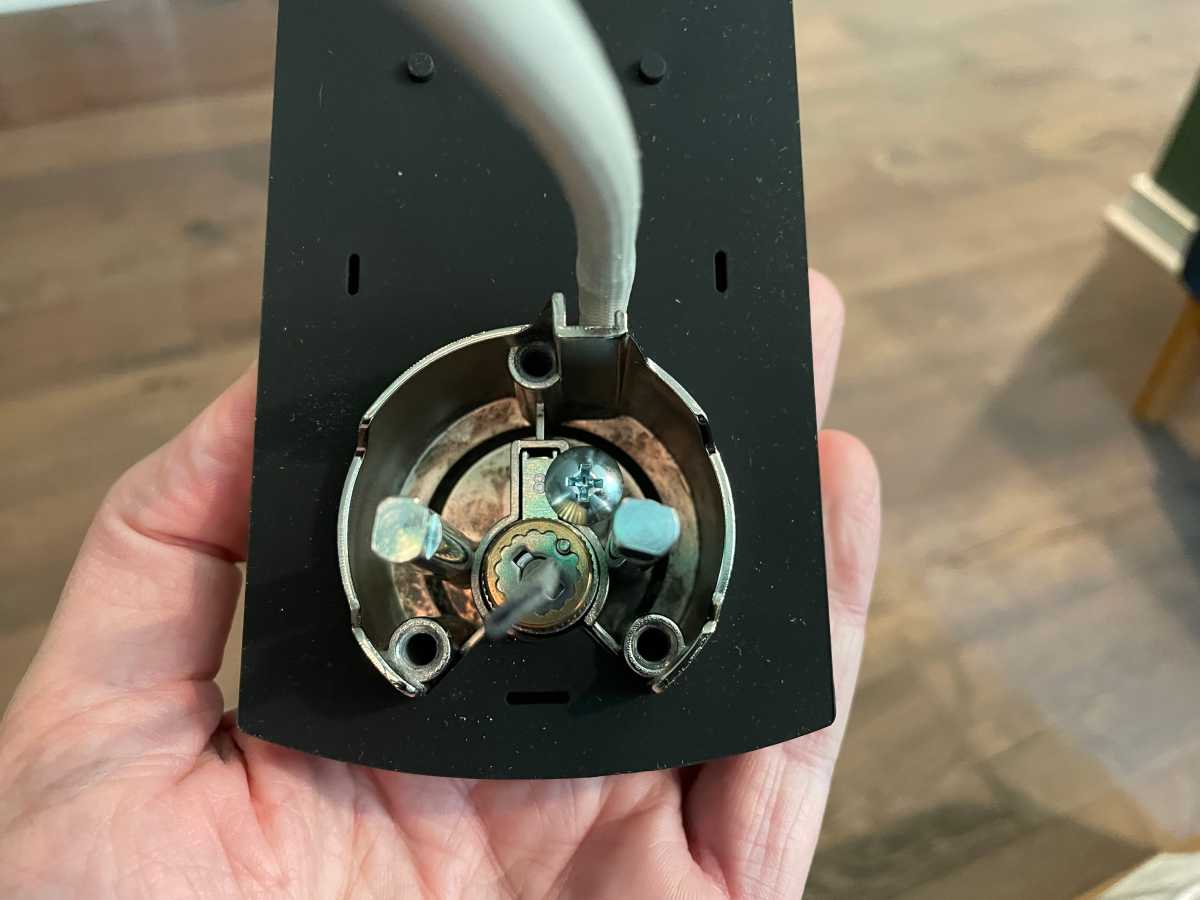
At a glance
Expert review
Positives
- The external part is sturdy and compact
- Excellent fingerprint reader
- Very cheap
Disadvantages
- The interior fittings feel flimsy and dull to look at
- The lack of wireless connectivity means no smart home integration
- Fingerprint registration means maintaining an offline list
Our verdict
This $80 lock won’t work with your phone (or your smart home system), but it’s a sturdy and secure way to add PIN, fingerprint, or key-enabled access to your entry doors.
Price upon review
This value shows the geolocated price text for product undefined
Best price today
Best Prices Today: Brinks Electronic Fingerprint/Keypad Deadbolt with Pro-Guard
Brinks is probably the biggest name in the armored car world, so it goes without saying that the company should be reliable enough to protect the door of your home, right? Well, don’t get too excited yet: the Brinks Electronic Fingerprint/Keypad Deadbolt with Pro-Guard (phew!) Door Lock proudly bears the Brinks logo, but Hampton Products is the actual manufacturer.
Hampton produces a range of locks and door hardware products that it markets under various brand names. No shade on Hampton, of course, but consumers need to know who is behind the stuff they buy.
If you don’t need any real smart features, the Brinks Electronic Fingerprint/Keypad Deadbolt with Pro-Guard is a capable lock at a reasonable price.
Specifications and details
This lock is a simple product, but straddles the line between commercial and residential applications. It’s not formally certified, but Hampton says the lock meets commercial ANSI Grade 3 standards — the lowest commercial ANSI certification available for entry locks — and that “they test to the exact same standards and with the same exact methods.” The lock does not have BHMA certification (which is more typical for residential use). If you want to know more about it ANSI and BHMA certificationyou can read all about it via the previous link.

Mounting the fingerprint reader on top of the lock makes it much easier to register and later use fingerprints to unlock the door.
Hampton products
Regardless, the Pro-Guard tag in the product name is Hampton’s nickname for advanced security features in the Brinks hardware, including a steel deadbolt, pick- and drill-resistant pins, and an “anti-pry shield.” But it’s crucial to note that while the device has a keyboard and a fingerprint reader, it’s not a smart lock and doesn’t have wireless capabilities. That means all lock programming and management must be done locally, via the keypad, which I’ll get into more in a moment.
First, the hardware. Here the lock also extends across commercial and residential applications without ending up in either world. The relatively compact exterior hardware is available in three finishes (matte black, satin nickel and Tuscan bronze) and features a curved design with scalloped edges that would look right at home on most front doors.

The Brinks Electronic Fingerprint/Keypad Deadbolt runs on four AA batteries in the inner fitting.
Christopher Null/Foundry
However, the large, physical numeric keys on the keyboard (and the even larger lock button) detract from the otherwise luxurious appearance. The white plastic chicks look like they would be better suited for an airport than a cul-de-sac. On top of the coat of arms is a fingerprint reader, which is largely positioned at a horizontal angle, making it much easier to access than vertically placed readers. Finally, the lock can be opened with a physical lock. There is no port for backup power if the lock’s batteries (four AA cells, not included) fail. Hampton says new batteries should last up to two years with normal use. That shouldn’t be difficult, since there are no power-hungry radios on board.
In contrast, the interior fittings are uninspired, a plasticky black brick with nothing distinguishing it other than a slender knob. A small LED below the button turns green for a few seconds when the lock is opened and red when the lock is closed.
Installation and installation
Installation is simple, with only a slight deviation from the usual smart lock format. While the outer fitting is connected to a thin plate on the inside of the door, this is done with three bolts instead of the usual two, with the bolts arranged in a triangle. The extra support seems to hold the lock in place better than most; at least in my testing it was never mentioned during the days of use.
A single power cable connects the outer rosette to the inner rosette, which is secured to the frame with three small screws. Note that one of these screws is recessed into a deep, narrow channel. I had to get out a small, thin Phillips screwdriver to get it into place due to the difficult placement.

Three bolts secure the Brinks Electronic Fingerprint/Keypad Deadbolt with Pro-Guard’s interior and exterior hardware, which keeps the lock from moving to one side or the other over time.
Christopher Null/Foundry
After installation, it’s time to set up access. Again, this lock has no traditional smart functions, so all settings must be made by entering a series of codes on the keypad. That includes everything from setting PIN codes, registering fingerprints and changing operational parameters such as auto-locking. The lock can store 50 fingerprints, 50 PIN codes and 50 additional single-use codes.
Because the lock has no clock or connection to an external copy, all PIN codes are an all-or-nothing affair. However, single-use codes are automatically deleted after a single use or 72 hours after they are created. Additional settings configurable via the keypad include auto-lock (0 to 99 seconds), vacation mode (which disables all PIN codes except the master code), and the ability to mute system sounds. A security feature against unauthorized access disables the system for 1 minute after 5 incorrect PIN codes or fingerprint scans. This feature cannot be changed or disabled.

The lock’s keypad isn’t the most attractive design we’ve seen on modern locks, but the buttons are backlit and perform well.
Christopher Null/Foundry
To give you an idea of what working with the keypad is like, registering a PIN code looks like this: Press and hold the lock button for 3 seconds, enter the master code, press the lock button, press 3, press 1, enter the new PIN, press the lock button, re-enter the new PIN and press the lock button again. It’s not necessarily complicated, but it does take time and requires a lot of attention to detail as you follow the broadsheet user guide (which is also available onlinealthough this is not the easiest document to read in PDF format).
Enrolling fingerprints works in a similar way, with one big twist: each fingerprint must be assigned to a fingerprint slot (1 to 50), and it’s up to you to remember whose fingerprint is assigned to each slot. I suggest that you create a log because if you need to delete a fingerprint later, you can only do so by providing the relevant lock number. Alternatively, you should delete all remove the fingerprints en masse and start over.
Should you buy a Brinks electronic fingerprint/keypad deadbolt with Pro-Guard?
The good news is that the lock works exceptionally well when in use. The buttons may be ugly, but they’re large enough and spaced far enough apart that you can tap without error, and the lighting is bright enough to make it easy to see at night. The fingerprint reader works perfectly and during my testing it didn’t miss a single scan. Since there are no logging or remote access features, there isn’t much else to test. But what the lock does, it does well.
Bottom line: If you don’t need any real smart features, the Brinks Electronic Fingerprint/Keypad Deadbolt with Pro-Guard is a capable lock at a decent price that can free you from the tyranny of keys, as long as you understand what you want . get again.